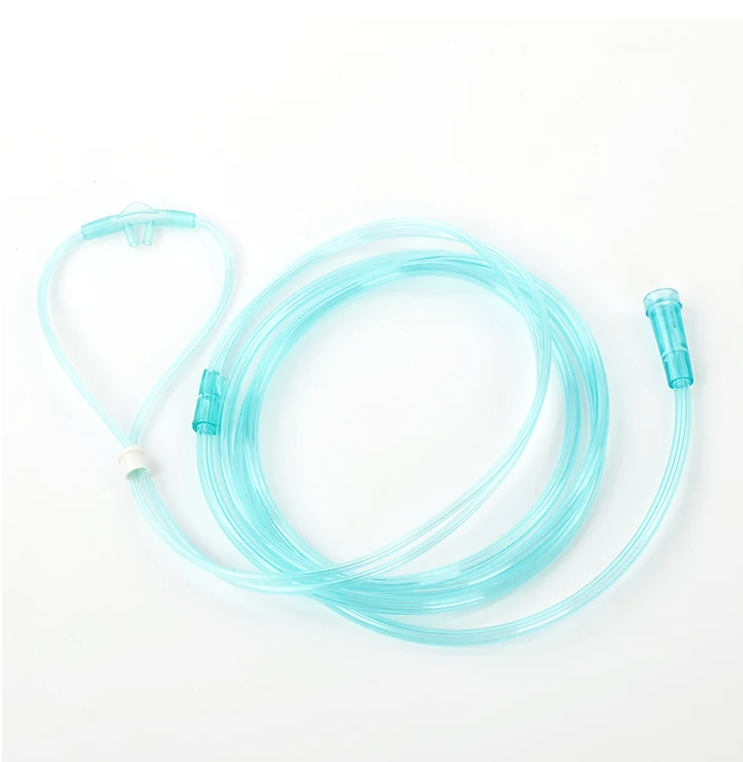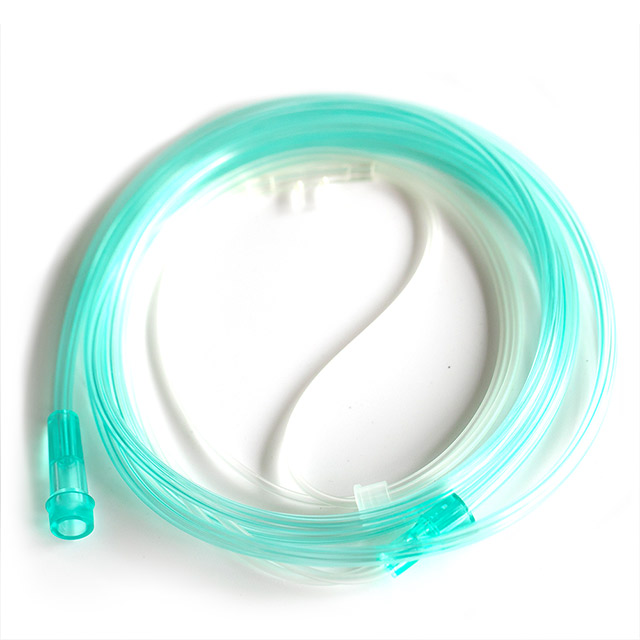This article serves as a comprehensive guide to nasal cannulas, a vital piece of oxygen equipment for individuals requiring supplemental oxygen. We’ll delve into everything from choosing the right type and flow rate to understanding safety precautions and maintenance. Whether you’re a procurement manager for a hospital, a medical distributor, or someone managing a patient’s homecare, this guide will provide valuable insights, making it worth your time to read. My name is Allen, and with years of experience in a leading medical supplies factory in China, I’m here to share my expertise.
What is a Nasal Cannula and Why is it Used?
A nasal cannula is a lightweight, two-pronged device used to deliver supplemental oxygen to individuals who cannot get enough oxygen on their own. It’s a common form of oxygen therapy for people with respiratory conditions like chronic obstructive pulmonary disease (COPD), pneumonia, asthma, and other conditions that affect breathing. The cannula consists of a flexible tubing that connects to an oxygen supply, with two small prongs that rest inside the nostrils.
My firsthand experience at our factory, ZhongXing, has shown me the critical role these seemingly simple devices play. We have 7 production lines dedicated to manufacturing a wide array of medical consumables, including high-quality nasal oxygen cannulas, and seeing the direct impact on patients’ lives is incredibly rewarding. We prioritize using medical-grade, hypoallergenic materials to ensure patient comfort and safety.
How Does a Nasal Cannula Deliver Supplemental Oxygen?
A nasal cannula works by delivering a continuous flow of oxygen directly into the nasal passages. The tubing is connected to an oxygen source, which can be an oxygen tank, an oxygen concentrator, or a wall-mounted system in a hospital setting. The oxygen flow is measured in liters per minute (LPM), and the prescribed flow rate is determined by a healthcare professional based on the individual’s needs.
The oxygen travels through the tubing and out through the two small prongs inserted into the nostrils. As the person breathes, the supplemental oxygen mixes with the air, increasing the overall oxygen levels in the lungs. It is important to never guess the flow rate that a patient requires, and always refer to doctors orders.
What are the Different Types of Nasal Cannulas?
While the basic design is similar, there are variations in nasal cannulas. The most common distinction is between low-flow and high-flow nasal cannulas. Low-flow nasal cannulas are the standard type, typically delivering oxygen at a flow rate of 1 to 6 liters per minute.
High-flow nasal cannulas (HFNC) are designed to deliver a much higher flow of oxygen, sometimes up to 60 liters of oxygen per minute. These are typically used in hospital settings for patients with more severe respiratory distress. Another type is the oxygen conserving device, which includes cannulas with a reservoir that stores oxygen, releasing it only when the patient inhales. This helps to conserve oxygen, making portable systems last longer.

What is Flow Rate and Why Is It Important?
Flow rate is a critical factor in oxygen therapy. It refers to the amount of oxygen per minute delivered to the patient, measured in liters per minute (LPM). The correct flow rate is essential to ensure the patient receives the oxygen you need without experiencing complications. Too little oxygen can lead to continued shortness of breath and hypoxemia (low blood oxygen), while too much oxygen, especially over extended periods, can lead to oxygen toxicity in some rare cases.
A doctor will prescribe a specific flow rate based on the patient’s condition, blood oxygen levels, and overall respiratory function. It’s crucial to follow this prescription precisely and not adjust the flow rate without consulting a healthcare professional. For instance, a patient with mild COPD might require a flow rate of 1-2 liters, while someone with a more severe condition might need 4-6 liters of oxygen per minute.
How to Choose the Right Nasal Cannula Size and Type?
Choosing the right nasal cannula involves considering several factors. Firstly, the size of the prongs needs to fit comfortably within the nostril without causing irritation or blockage. Nasal cannulas are available in different sizes, from infant to adult.
Secondly, the type of nasal cannula depends on the required flow rate and the patient’s specific needs. As mentioned earlier, low-flow nasal cannulas are suitable for lower oxygen requirements, while high-flow cannulas are used for higher demands. If portability is a concern, a cannula designed to work with a portable oxygen concentrator might be necessary.
How to Safely Use a Nasal Cannula at Home?
Using a nasal cannula at home requires understanding and following safety precautions. Oxygen is highly flammable, so it’s crucial to keep your oxygen equipment away from open flames, such as stoves, candles, or cigarettes. Never smoke while using oxygen, and make sure anyone in the vicinity is aware of the safety precautions.
Proper placement is also essential. The two prongs should be inserted into the nostrils, and the tubing should be secured comfortably, often with adjustable straps that go around the ears. Regularly check the tubing for kinks or blockages that could restrict the flow of oxygen. It’s also a good idea to have a backup oxygen supply in case of a power outage if you are using an oxygen concentrator.
What are the Potential Side Effects of Using a Nasal Cannula?
While nasal cannulas are generally safe, some potential side effects can occur. The most common is nasal dryness or irritation. This happens because the constant flow of oxygen can dry out your nasal passages. Using a humidifier attached to the oxygen system can help humidify the oxygen and alleviate this problem.
Other possible side effects include nosebleeds, skin irritation around the nostrils or ears (where the tubing rests), and headaches. If any of these side effects become severe or persistent, it’s important to consult a healthcare professional. In rare cases, very high flow rates of oxygen over long periods can lead to oxygen toxicity, which can affect the lungs and central nervous system.
How to Maintain and Clean Your Nasal Cannula?
Regular maintenance and cleaning are vital to ensure the nasal cannula functions correctly and to prevent infection. The nasal prongs should be cleaned daily with mild soap and water, and the tubing should be replaced regularly, as recommended by the manufacturer or healthcare provider (often every 2-4 weeks).
If a humidifier is used, it should be cleaned and disinfected according to the manufacturer’s instructions, usually at least once a week. This prevents the growth of bacteria or mold, which could be inhaled along with the oxygen. Proper maintenance not only prolongs the life of the oxygen equipment but also ensures the safety and effectiveness of the oxygen therapy.
Understanding High-Flow Nasal Cannula (HFNC) Therapy
High-flow nasal cannula (HFNC) therapy is a specialized form of oxygen delivery that uses high-flow cannulas to deliver a significantly greater amount of humidified oxygen than traditional low-flow nasal cannulas. HFNC can deliver up to about 60 liters of oxygen per minute, compared to the typical 1-6 liters per minute with standard cannulas.
This type of therapy is often used in hospitals for patients with acute respiratory failure or other conditions requiring high levels of oxygen support. The humidified oxygen helps to keep the nasal passages moist and prevents the drying and irritation often associated with high flow rates. HFNC can also provide a small amount of positive airway pressure, which can help keep the airways open. This is most often used in a clinical, or hospital setting.

Comparing Nasal Cannulas to Other Oxygen Delivery Systems
While nasal cannulas are a common and convenient oxygen delivery system, other options exist, including face masks and reservoir masks. Face masks cover the nose and mouth and are often used for patients who require higher oxygen concentrations or who have difficulty breathing through their nose.
Reservoir masks have a bag attached that stores oxygen, allowing for the delivery of even higher oxygen concentrations. The choice of oxygen system depends on the individual’s needs, the severity of their respiratory condition, and their ability to tolerate the different devices. A doctor or respiratory therapist will determine the most appropriate system.
Key Considerations for Procurement Managers & Medical Distributors
For individuals like Mark Thompson, a hospital procurement manager in the USA, sourcing reliable and cost-effective medical supplies is paramount. Mark, and others in similar roles, prioritize several key factors:
- Quality Assurance: Ensuring the nasal cannulas are manufactured from high-quality, medical-grade materials is crucial. This includes verifying the materials’ biocompatibility and non-toxicity.
- Sterility Validation: For sterile nasal cannulas, rigorous sterility validation processes are essential. This involves confirming that the sterilization method used is effective and meets relevant standards.
- Certifications: Compliance with international standards like ISO 13485 (for medical device quality management systems) and CE marking (for products sold within the European Economic Area) is a must. Depending on the target market, FDA registration or approval may also be required.
- Regulatory Compliance: Understanding and adhering to the specific regulations of the target country (e.g., USA, Europe, Australia) is critical. This includes labeling requirements, device classification, and post-market surveillance obligations.
- Ethical Sourcing: Ensuring the supplier adheres to ethical labor practices and environmental standards is increasingly important.
- Logistics and Supply Chain: Reliable shipping, timely delivery, and efficient inventory management are essential to avoid supply shortages.
- Payment Methods and Terms: Secure and flexible payment options are crucial for international transactions.
- Batch Traceability: The supplier have a system that lets you track all batches to prevent defects.
My experience at ZhongXing allows me to directly address these concerns. We have a robust quality management system, stringent sterilization protocols, and comply with all major international certifications. We also understand the importance of clear communication, timely delivery, and building long-term partnerships with our B2B clients. We actively participate in medical device and healthcare exhibitions, providing a platform for potential customers like Mark to directly interact with us, examine our products (gauze swabs, cotton balls, and more), and discuss their specific needs.

For example, a clinic administrator might have to provide proof of sterility to his governing body. Having proper validation reports on file greatly simplifies the process. Our internal team at the factory focuses on the traceability of all batches of items, especially sterile ones. This prevents problems with any defects in material or workmanship.
Key Takeaways for Nasal Cannula Users and Buyers
- A nasal cannula is a common and effective device for delivering supplemental oxygen.
- Understanding the prescribed flow rate and following it precisely is crucial.
- Proper cleaning and maintenance are essential to prevent infection and ensure the device functions correctly.
- Safety precautions, especially regarding flammability, must be strictly followed.
- Procurement managers and distributors should prioritize quality, certifications, regulatory compliance, and ethical sourcing.
- Open communication and strong partnerships between suppliers and buyers are vital for a smooth and reliable supply chain.
- Always use a nasal cannula as directed by the prescribing doctor.
Post time: 3月-25-2025





